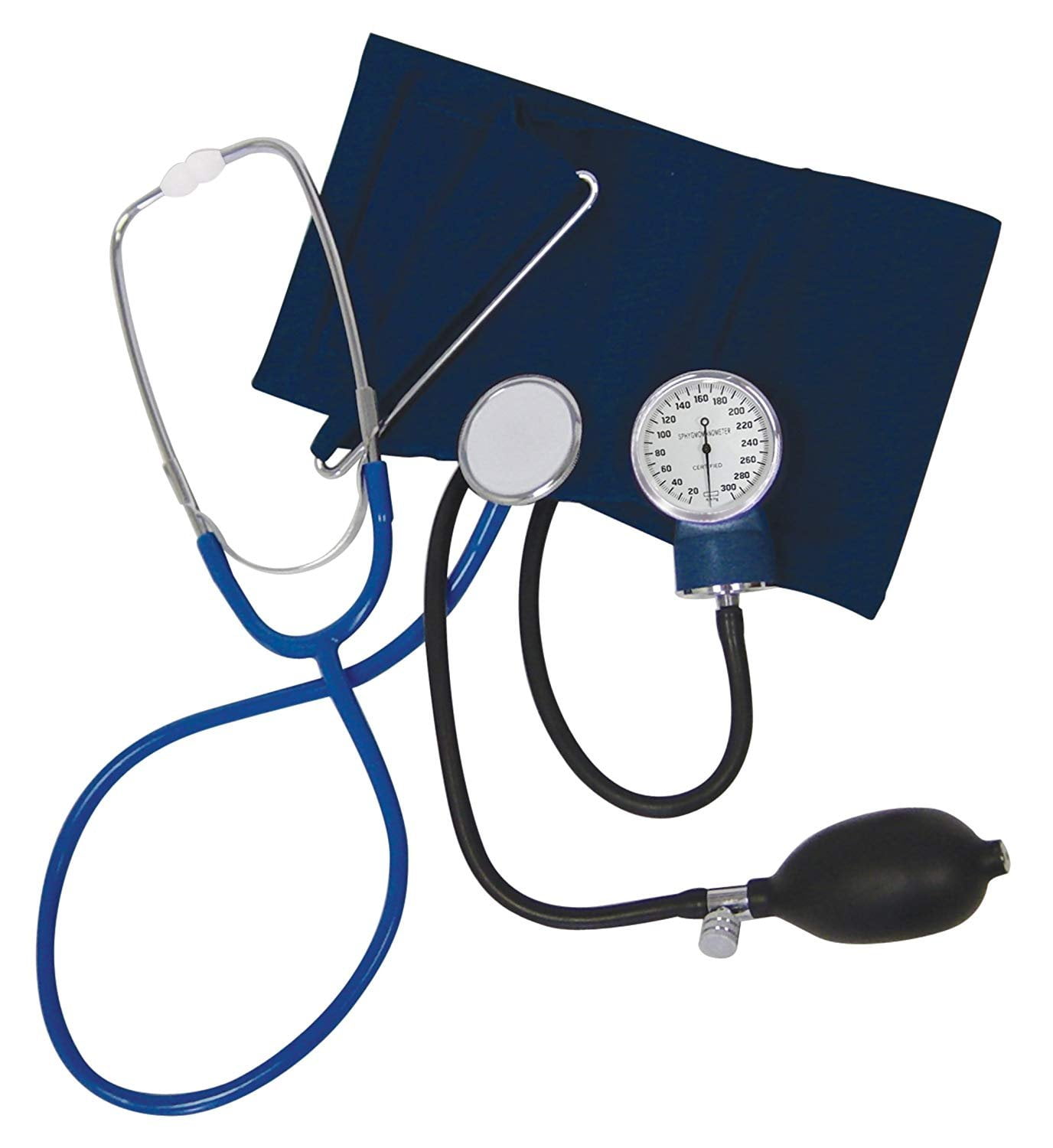Lumiscope 100-021 Self Taking Manual BP Monitor
$10.80
1430 in stock
Blood Pressure is the pressure that flowing blood exerts on the arteries. The heart contracts and relaxes, creating two levels of blood pressure. SYSTOLIC pressure is the highest level of blood pressure, it is the level of pressure when the heart contracts. DIASTOLIC pressure is the lowest level of blood pressure, it is the level of pressure when the heart relaxes. Blood pressure values are measured in millimeters of mercury written as mmHg. For example, if your blood pressure is 126/76, the systolic pressure is 126 mmHg, and the diastolic pressure is 76 mmHg. High blood pressure, or hypertension, is a level of blood pressure consistently above normal. Most doctors consider a "normal" blood pressure reading for an adult to be 120/80, although it varies according to the individual. Standards for assessment of high or low blood pressure, without regard to age, have been established by the World Health Organization. When blood pressure is measured in a doctor’s office or clinical setting it may cause nervousness or stress in the patient which can produce inaccurate, higher blood pressure rates. This is commonly known as the "white coat" syndrome. Home measurement reduces the effect outside factors might have on blood pressure readings. Self-monitoring is a good way to keep track of your own blood pressure, but it is also very helpful to your doctor. It provides a comprehensive view of the blood pressure changes over a period of time and can help in evaluating the possibility of hypertension. Though there are many digital blood pressure monitors, there are also many prople who prefer checking blood pressure manually. That’s where the Lumiscope 100-021 fits the bill. It doesn’t require an electric power supply or batteries. It’s very affordable. More than that, you can use it anywhere – even on long vacations. If you need to examine your blood pressure on a frequent basis, the 100-121 may just be what the doc
Amazon.com
For patients with hypertension, home monitoring can help detect dangerous blood-pressure spikes before they cause problems. Tracking measurements over time also gives a better overall picture of health than a single reading at a hospital or clinic, where nervousness can often distort results. But the most sophisticated blood-pressure monitor in the world won’t do a thing for hypertension if you need a nurse to help you use it. The Lumiscope self-taking blood-pressure monitor makes it possible to take the same kind of extremely accurate blood-pressure readings you get in the doctor’s office, all without leaving your home. It’s lightweight and highly portable, so you can keep track of your health on the road. And like most manual blood-pressure monitors, it’s relatively unaffected by small movements and is not especially fussy about cuff placement and arm positioning. The D-bar style cuff makes it easy to get a good fit when you’re taking your own blood pressure and have only one hand free: just pull down and cinch tight. The attached stethoscope is also a must if you’re going solo. The measurement process involves letting the pressure out at the correct rate while listening for the thump through the stethoscope and simultaneously taking two readings on the gauge. The entire process requires a certain degree of coordination and is best employed after a few practice runs in the doctor’s office. The bottom line: this is one of the easier-to-use manual models around, but it’s still best if you have someone to help. –Mary Park
- Manual blood pressure monitor is lightweight, accurate, and highly portable
- D-bar cuff with touch and hold closure makes one-handed application a breeze
- Limited one-year warranty
- Attached stethoscope, inflation bulb and valve, aneroid gauge with spring clip
- Includes carry case, instructions, and blood pressure record log
| Weight | 1 lbs |
|---|---|
| Dimensions | 1 × 1 × 1 in |


Reviews
There are no reviews yet.